 Mysteries
Mysteries  Mysteries
Mysteries  History
History 10 Surprising Stories About the Texas Rangers
 Humans
Humans 10 Philosophers Who Were Driven Mad by Their Own Theories
 Miscellaneous
Miscellaneous 10 Video-Game-Worthy Weapons and Armors from History
 Weird Stuff
Weird Stuff 10 Psychics Who Accurately Predicted Wartime Events
 The Arts
The Arts 10 Pieces of Art Inspired by a Broken Heart
 Health
Health 10 Science Fiction-Sounding New Medical Treatments
 History
History 10 Surprising Facts About the Father of Submarine Warfare
 Space
Space Ten Astonishing New Insights into Alien Worlds
 Weird Stuff
Weird Stuff 10 Bizarre Summer Solstice Rituals Still Practiced Today
 Mysteries
Mysteries Top 10 Haunting Facts About the Ghost Ship MV Alta
 History
History 10 Surprising Stories About the Texas Rangers
 Humans
Humans 10 Philosophers Who Were Driven Mad by Their Own Theories
Who's Behind Listverse?

Jamie Frater
Head Editor
Jamie founded Listverse due to an insatiable desire to share fascinating, obscure, and bizarre facts. He has been a guest speaker on numerous national radio and television stations and is a five time published author.
More About Us Miscellaneous
Miscellaneous 10 Video-Game-Worthy Weapons and Armors from History
 Weird Stuff
Weird Stuff 10 Psychics Who Accurately Predicted Wartime Events
 The Arts
The Arts 10 Pieces of Art Inspired by a Broken Heart
 Health
Health 10 Science Fiction-Sounding New Medical Treatments
 History
History 10 Surprising Facts About the Father of Submarine Warfare
 Space
Space Ten Astonishing New Insights into Alien Worlds
 Weird Stuff
Weird Stuff 10 Bizarre Summer Solstice Rituals Still Practiced Today
10 Surprisingly Interesting Facts About Chickens
Chickens are among the most common animals in the world. Their total population is estimated to be at least 19 billion, three times the total population of humans. For comparison, the second most common domesticated food animals are cattle, with a population of 1.4 billion. Chickens are also the most slaughtered animal—more chickens are killed yearly than all other land animals combined. In the United States alone, seven billion chickens are killed annually. With so many chickens around, it’s easy to take them for granted. But when you look closer, they are a surprisingly fascinating animal.
10They Probably Weren’t Domesticated For Food
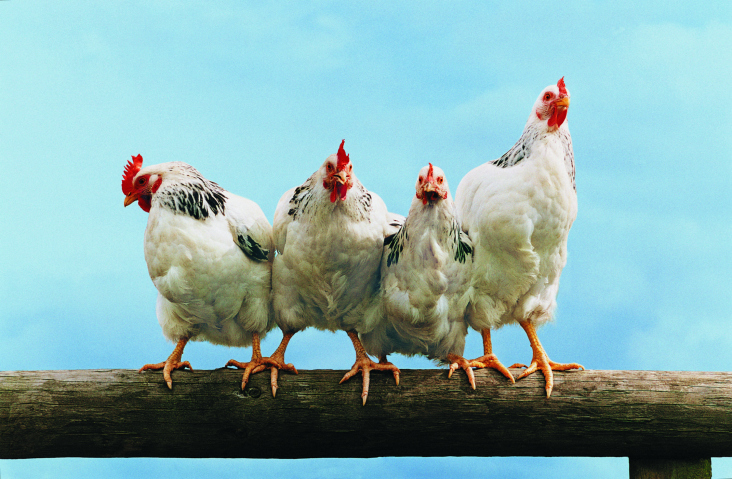
It seems surprising, but archaeologists now believe that chickens weren’t actually domesticated for food. Instead, the red junglefowl (Gallus gallus) of Southeast Asia were likely first captured by humans for the notoriously cruel “sport” of cockfighting, eventually developing into the modern domesticated chicken. This probably happened at least 7,000 years ago, making chickens one of the oldest domesticated animals. The egg-laying bird quickly spread across the world, although its value as a source of meat was relatively limited until the development of modern industrial farming techniques.
Cockfighting was an enormously popular sport for most of history, although it is now widely recognized as inhumane and has been made illegal in most countries. Nevertheless, the so-called sport continues underground and has been linked to gambling, drugs, and the trade in illegal weapons. The gamecocks involved are specially bred, trained, and pumped full of steroids. Dagger-like attachments called gaffs, which can be as long as 7.5 centimeters (3 in) are attached to their feet. Their feathers are plucked and their combs and wattles are cut off to prevent their opponent from striking them. Fights generally lead to the death of one or both birds, along with broken bones, damaged eyes, and punctured lungs.
9The Chicken Tax
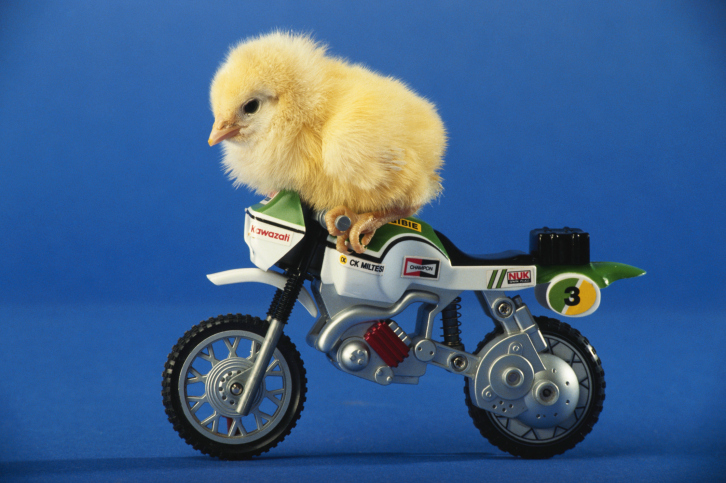
During the Cold War, the US poultry industry grew rapidly, forcing down prices of the formerly expensive chicken. American farmers began exporting their cheap chickens abroad, where they were often sold at much lower prices than local birds. This did not impress foreign farmers, who accused American producers of undercutting them. They also began to claim that American chickens had been pumped full of chemicals—farmers in West Germany claimed that some US birds had been injected with arsenic. France, West Germany, and several other European countries soon introduced a heavy tariff on US poultry imports, reducing the number of American chickens sold in Europe by at least 25 percent.
This development did not go down well with American agricultural interests—an Arkansas senator once interrupted an international nuclear conference just to complain about it. In 1963, President Lyndon Johnson responded to the ban by introducing a 25 percent tariff on starch, dextrin, brandy, and light trucks brought into the US. The tariff on light trucks was intended as a direct blow against European auto companies like Volkswagen, whose products were becoming increasingly popular in the US (United Automobile Workers had actually threatened a strike unless Johnson did something about Volkswagen imports, and the “chicken tax” was the perfect opportunity).
The chicken tax is still around today, and while it may have helped US manufacturers dominate the light truck market, it also prevents those same companies from bringing in trucks they produce overseas. To beat the tariff, Ford used to add windows and seats to trucks made in Turkey. Once these “passenger vehicles” were imported to the US, the windows, and seats were removed and they were converted back to light trucks (Mercedes and Dodge did the same thing). Similarly, the Subaru BRAT used to have a huge advantage because it came with two detachable rear seats, allowing it to be classified as a passenger vehicle. When the loophole was closed, it effectively killed the BRAT.
8The Great KFC Chicken Conspiracy
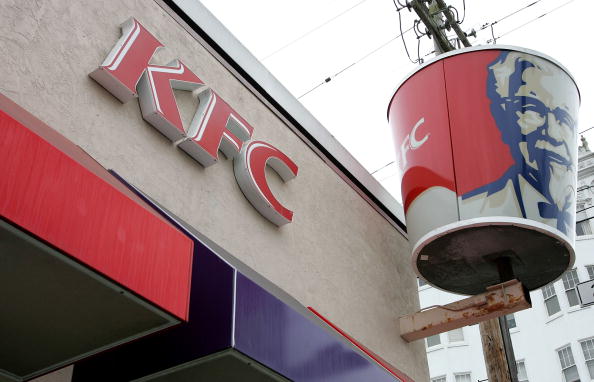
These days, if something is popular, it’s almost guaranteed to have a wild conspiracy theory about it—and you don’t get much more popular than fried chicken. One story goes that the government forced a popular fast food chain to change their name from Kentucky Fried Chicken to KFC after discovering that their “chicken” wasn’t actually made from real chickens.
The theory claims that a study by the University of New Hampshire found that KFC’s chickens had been tampered with so much that they could only be classified as “genetically manipulated organisms“—whatever they were, they certainly weren’t chickens anymore. The creatures had no beaks, feathers, or feet and had to be kept alive by tubes that pumped blood and nutrients through their bodies. Their bones had been genetically shrunk in order to make room for more meat.
It’s a very creepy story, but fortunately it isn’t true. In reality, KFC changed their name because they wanted to diversify their menu away from simply chicken. They also wanted to stop using the word “fried” since it carries connotations of ill-health. And mostly they just wanted a shorter, snappier version of their name. Meanwhile, the University of New Hampshire is so sick of the story that they actually maintain a page on their website denying ever conducting such a study.
7The Chicken Gun
A “bird strike” is the surprisingly non-technical term for when a flying bird collides with an airplane. Although most of the birds involved weigh less than 3.5 kilograms (8 lbs), the velocity of such a collision can be enormous, potentially causing severe damage to the aircraft. In the 1960s, more than 60 people were killed when their plane ran into a flock of starlings and lost three engines before crashing.
To test how different parts of an aircraft would react to a bird strike, safety-conscious scientists developed the chicken gun (also known as the turkey gun, chicken cannon, or rooster booster). The gun launches chicken carcasses at stationary airplanes at speeds of up to Mach 1.4 (1,674 km/h). This is known as the “Chicken Ingestion Test” and is required to be performed before a new jet engine can be certified safe by the Federal Aviation Administration (FAA). Other aircraft parts are also subject to the test, including windshields, tails, and wings. The cannon is also used to test airplane “black boxes” by launching them into the ground at high speed (most “black boxes” are expected to be capable of surviving an impact up to 3,500 times the force of gravity).
Sadly, the popular story about inexperienced engineers causing disaster by failing to thaw a frozen chicken carcass before launching it at a plane has largely been debunked.
6Kuwaiti Field Chickens
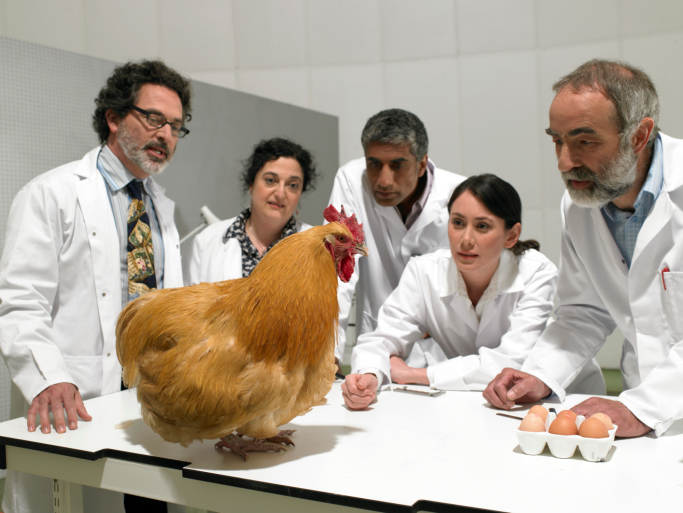
The 2003 invasion of Iraq was one of the most sophisticated military operations in recent history—just ask the chickens. Before the war began, there were concerns that Iraq might use chemical weapons and that pollution from destroyed oil installations could block the standard military chemical detection equipment. In addition, some of the detection equipment was apparently prone to malfunction, raising the alarm repeatedly even though the invasion hadn’t started yet and there were no dangerous chemicals in the air.
To overcome these problems, US troops intended to cross the border into Iraq accompanied by cages of live chickens. The soldiers chose chickens because they have relatively poor respiratory systems, making them likely to be the first casualty during a chemical attack. (Coal miners used to take canaries with them for similar reasons). If the chickens suddenly died, the soldiers would quickly don their protective gear. They could also be used to determine if it was safe to take the gear off—an improvement on the original strategy of “selective unmasking.” The plan was suspended after 41 out of 43 chickens deployed to the gulf in anticipation of the invasion died within a week, although some US Marines intended to purchase local birds to replace them.
Apparently, chickens were also deployed during the First Gulf War. A possibly apocryphal story tells of how a group of US soldiers woke up one morning to find all their chickens dead. Panicked, the soldiers suspected a gas attack but later discovered that the chickens had frozen to death during the night. They ate them instead.
5Chicken Harvesters
Manually catching chickens is regarded as the worst job in the poultry industry, causing severe back pain and carpel tunnel syndrome. The physical requirements and difficult working conditions mean it’s hard to recruit and retain manual chicken catchers. To solve this problem, the mechanical chicken harvester was developed. The machine is capable of catching up to 200 birds in 30 seconds and up to 8,000 in one hour. Despite appearing terrifying beyond all reason, the machine may actually be kinder to the chickens, who develop fewer bruises and injuries as they are no longer caught by their legs and wings and carried upside-down. Experiments apparently found that the use of a harvester reduced damage to the chicken’s leg by 30 percent and damage to the wings by 11 percent compared to manual catching techniques.
4Chinese Silkie Chickens
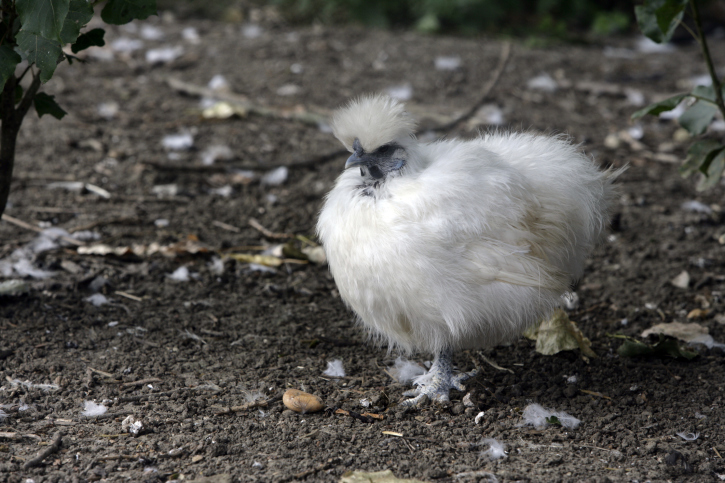
Unlike regular chickens, Chinese Silkie chickens are noted for their extremely dark meat. This is due to genetic fibromelanosis, a condition which causes a massive expression of the pigment cells, to the point that the bones, flesh, and internal organs appear black or dark blue. Despite their name, it remains unclear whether they actually originated from China, where they are called wu go ji (“black-boned chicken”) and are often used for medicinal purposes.
They are called Silkie (or Silky) because of their distinctive plumage, which feels like silk to the touch. This is because their feathers lack the barbs which normally hold strands of the feather together. As a result, each strand of the feather stays apart from the others, giving the bird a fluffy appearance. Regarded as one of the gentlest animals in existence, they are favored by breeders because they readily hatch the eggs of other birds—including turkeys and ducks. Their black bones, flesh and internal organs are due to fibromelanosis.
3Which Came First, The Chicken Or The Egg?
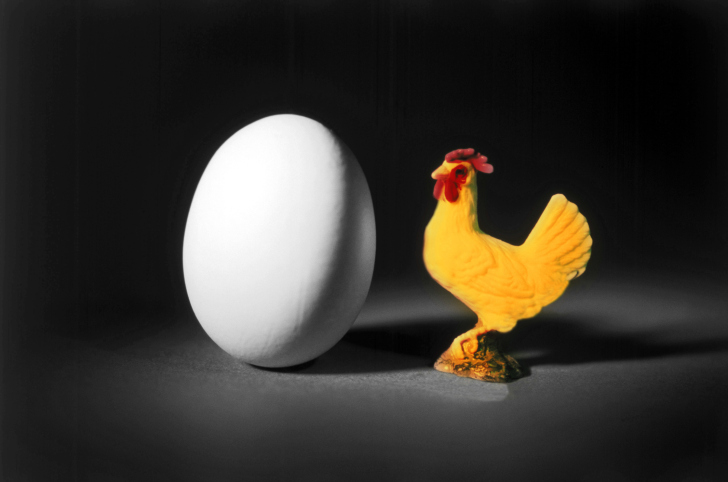
The question of the chicken and the egg has been asked since at least as early as 384 B.C. (Aristotle said both had always been in existence, while Stephen Hawking took a stand and said the egg came first). It is perhaps the most famous example of a circular reference—a situation where you have to know the answer to calculate the answer.
But perhaps it’s not so circular after all. In 2010, scientists discovered a protein called Ovocleidin-17, which quickens the production of eggshells in chickens. The egg cannot be produced without Ovocleidin-17, which in turn can’t be produced without the chicken, so the chicken came first. Sadly, one of the lead authors of the paper insisted that the research wasn’t aimed at answering the chicken-egg question, adding that the answer was inconclusive considering that eggs probably predate the dinosaurs.
2Chick Culling
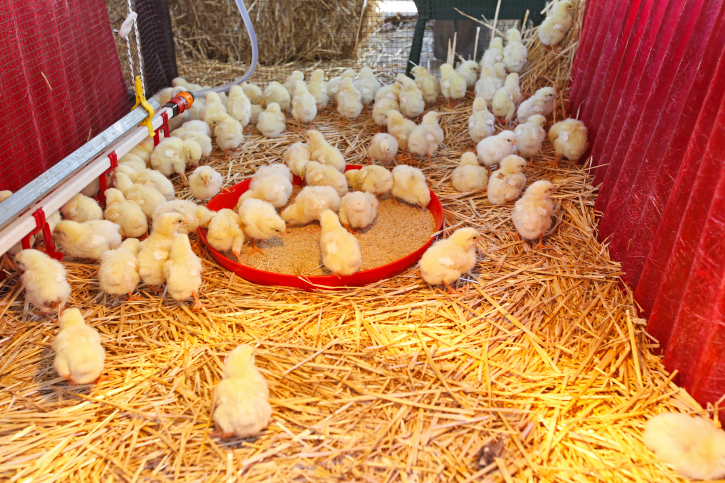
Chick culling is the act of killing unwanted chicks. An undercover operation launched by the animal rights group “Mercy for Animals” revealed that 150,000 chicks a day were killed at one Iowa hatchery. Immediately after birth, the chicks are sorted to determine their sex. Male chicks and sick or weak females are separated for culling. In the US this usually takes the form of “Instantaneous Mechanical Destruction.” The chicks are thrown alive into a grinder, which minces them to death in seconds. The mince is often used as fertilizer or reptile food.
The grinding method of culling is actually claimed to be kinder than gassing, which is often used in the UK and elsewhere. The male chicks are put into a chamber and exposed to carbon dioxide gas, which can take up to two minutes to kill them. Male chicks are killed immediately after birth because they can’t lay eggs. It is not considered profitable to raise them for consumption, since “laying” chickens are different from those bred for meat.
1Chicken Hypnotism
Chicken hypnosis is also called “tonic immobility” and refers to a sort of catatonic state triggered by fear. In other words, the chicken thinks it’s going to die and freezes up accordingly, entering a state of complete immobility. Chickens can be tricked into this state (as can several other animals including turkeys, quails, cows, and horses) by holding the chicken on the ground and drawing a straight line in front of its beak. The chicken will focus on the line and become hypnotized, remaining completely motionless even when its legs are released. The chicken will remain in a trance-like state for anywhere from 30 seconds to 30 minutes, or until they are distracted or moved. It sounds very cruel, but in some cases it’s the best option for getting a chicken to remain still when trying to restrain it might cause it to struggle and injure itself.
Elizabeth is an aspiring writer and blogger.








